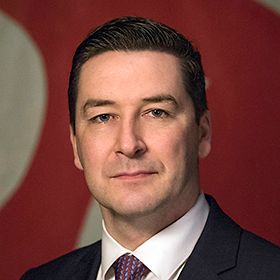Accelerated settlement for U.S. securities has gone well overall but Adrian Whelan, global head of market intelligence at Brown Brothers Harriman warned that the industry cannot be complacent as the impact of US T+1 is just beginning and other regions are looking to cut their settlement cycle.
On Monday 27 May Canada, Mexico and Argentina cut their settlement cycles from two days after a trade, T+2, to T+1. On the following day, Tuesday 28 May, the US market made that transition.
Whelan said in a blog that accelerated settlement for U.S. securities has gone well overall, apart from an initial night delivery issue at the DTCC and some teething issues at the Canadian Securities Depository on a subset of securities. Concerns around the double settlement day on May 28 and the MSCI index rebalancing on May 31 also did not materialize.
“Reported trade failure rates industry wide did not spike (which was a primary concern pre-implementation) with the percentage remaining under 2% (1.90% to be exact) on the first day of the newly accelerated cycle,” added Whelan.
He continued that same day affirmation rates at DTCC, the US post-trade market infrastructure, stayed well above the prescribed 90% threshold.
“In fact, according to DTCC, CTM Allocations Rate by 7 p.m. ET rose above 99%,” Whelan said. “This is a strong indicator of the increased operational efficiency and automation spurred by T+1.”
However, Whelan also warned that the industry cannot be complacent, despite this early success, as the full impact will only be seen on a large sample of trading.
“USD FX liquidity and ongoing securities lending discussions around new recall and loan termination cutoffs will continue,” added Whelan. “The full impacts of European UCITS and ETF securities and investor liquidity mismatches have yet to fully play out.”
American Century Investments said in a blog that while it’s still early days since the official transition to T+1, signs so far have been positive as to the industry’s preparedness to deliver. The blog said: “For example, while some predicted a meaningful increase in trade failure rates because of the change, failures have remained low under T+1. This has, in part, been aided by same-day trade affirmations from brokers/dealers coming in at a higher-than-expected clip.
Global T+1
American Century Investments also highlighted that India moved to T+1 last year, and Chile, Colombia and Peru plan to do so in 2025.
Whelan also said in a BBH video the next phase that the industry needs to be ready for global T+1, which will become the market standard. For example, the UK and the European Union are both reviewing T+1, and could move in 2027,
“There are lessons that people can learn from US T+1, but when you go into Europe it’s a far more fragmented infrastructure and legal frameworK,” he added. “So there are going to be a lot of wrinkles.”
Automation has been critical in US T+1 this leads to were mistakes in trading and settlement instructions, and Whelan said it will also be critical for global T+1. The US has a single currency and a single central securities depository, DTCC, but Europe has about 30 CSDs and currencies, which will be very complex if firms are not automated.
Firms put together project teams for US T+1, and Whelan recommended that these teams are not disbanded.
“The Avengers assembled for US T+1,” he added. “Let’s stay connected.”





